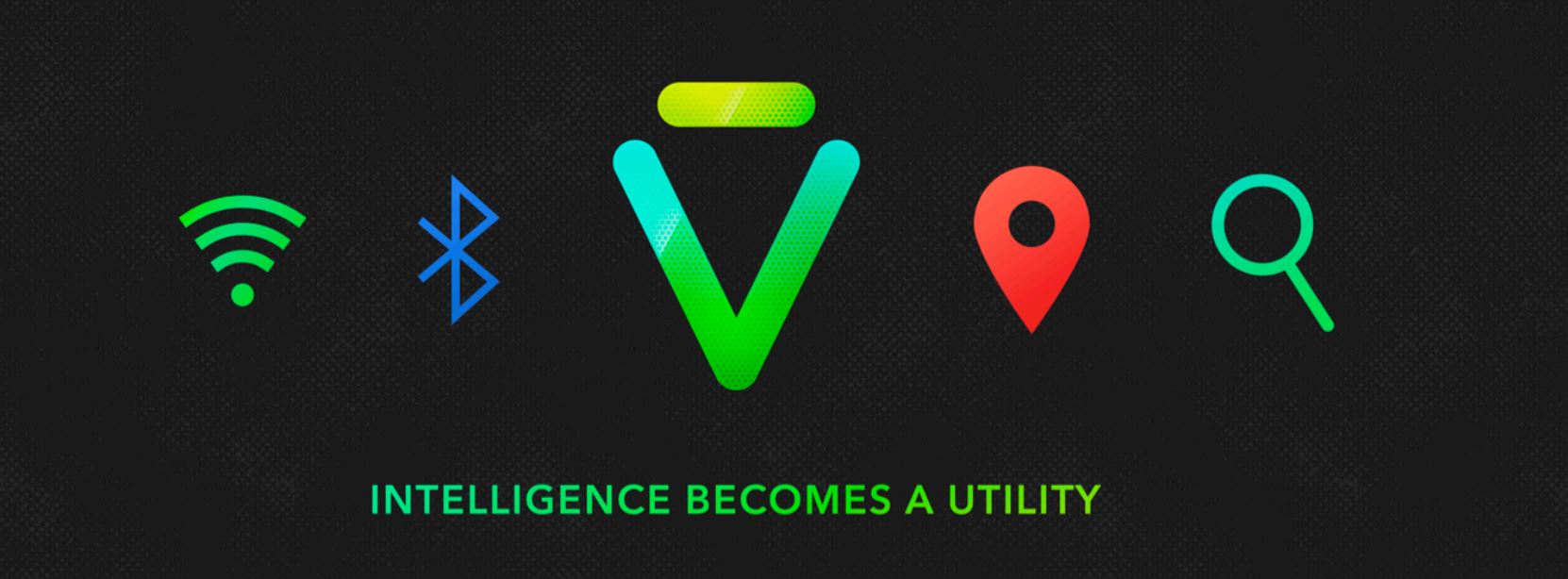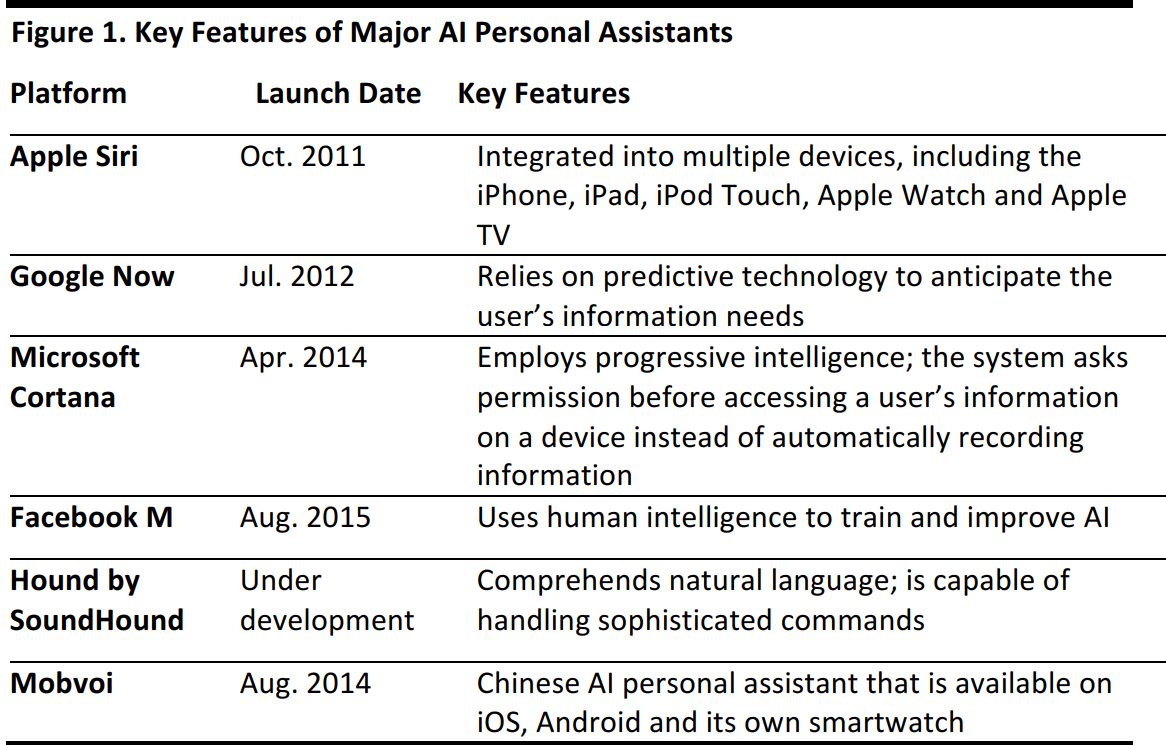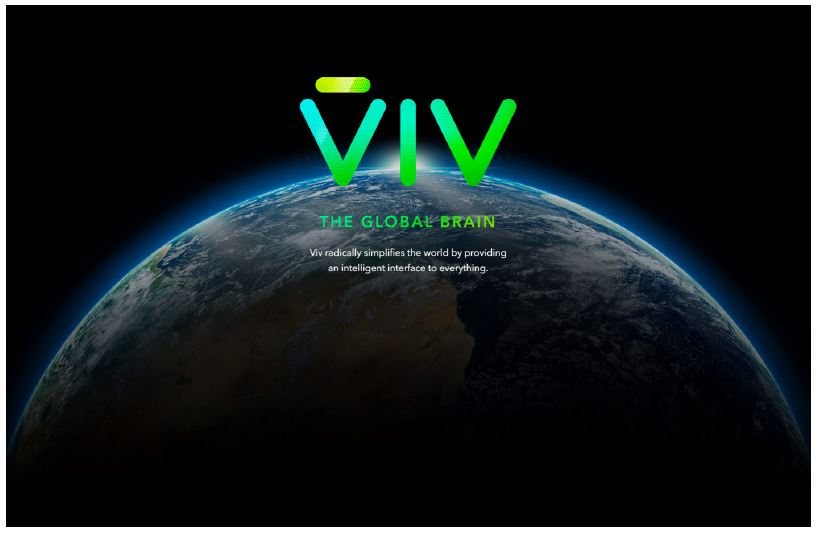EXECUTIVE SUMMARY
AI and machine learning technologies continue to advance rapidly, and industry experts say that 2015 was a key inflection point, marking an acceleration in the development of these technologies.
After selling their company to Apple in 2010, the creators of Apple’s Siri voice-controlled assistant formed a new company called Viv Labs to take the concept of the verbally initiated AI agent to a new level. Though its inner workings are a trade secret, the Viv personal assistant is able to learn from humans and create its own computer code, which enables it to establish connections between data and take actions that were previously unimaginable in hard-coded systems. We will know more when Viv makes its first public appearance at the TechCrunch Disrupt show in Brooklyn on May 9.
WHAT IS VIV?
Viv represents the next generation of intelligent automated assistants. It was created by the developers of the Siri personal assistant—Dag Kittlaus, Adam Cheyer and Chris Brigham—after they sold their company to Apple in 2010. The group launched a new company in 2013 called Viv Labs to develop a new digital assistant that overcame Siri’s limitations. The company’s name is based on the Latin verb
vivere (to live), and Viv aims to assist humans in order to improve their lives.

In the company lingo, Viv claims to provide an intelligent interface to everything, enabling people to interact with devices, services and things everywhere. Moreover, Viv gains knowledge through its interactions with the world, becoming “smarter” every day. What this means for humans is that Viv is able to adapt and learn, so it can take on new tasks.
The Viv team has been quietly honing its product over the past three years, and plans to debut Viv at the TechCrunch Disrupt show on May 9.
HOW DOES VIV WORK?

One of the best ways to explain Viv is to compare it to its predecessor, Siri. If one asks Siri to book a flight, she refers the user to travel websites. If one asks her to purchase a book, she is unable to do so, even though Apple sells books on its iBooks platform. Siri’s functionality has been extended to include a connection to OpenTable for making restaurant reservations, but
Wired notes that she is unable to search the user’s schedule to find a free night. Viv’s edge is that it aims to be more intelligent and consumer friendly, supplying the missing link between the human and the information.
The types of commands and queries that Viv can respond to are virtually endless, but some examples include
- Getting a flight’s status versus its schedule (i.e., is it on time or late)
- Selecting the best seat on an airline
- Selecting a good wine
- Suggesting meals
- Finding recipes
- Calculating cooking times
- Calculating the cost of the ingredients of a dish

The key to Viv’s functionality is something called a “planning objective function.” In mathematics, an objective function is a formula whose value the user seeks to maximize or minimize. In Viv’s case, the assistant is able to generate its own computer code and find its own answers; hence, the “life” in the system
THE REFERRAL ECONOMY
The Viv team does not want to be tied to any particular hardware manufacturer; rather, the company wants to license its technology to major TV manufacturers, car companies and app developers. It sees its business model in what Co-founder Dag Kittlaus calls “the referral economy”: Viv would make a restaurant reservation, arrange for an Uber car, send flowers or perform other services, and the company would earn a commission on each transaction.
COMPETITIVE LANDSCAPE
The landscape for AI personal assistants continues to get more crowded.
Bloomberg Business week called 2015 a “breakthrough year in artificial intelligence,” and Google Senior Fellow Jeff Dean commented that the pace of advancement in AI is “actually speeding up.” In our December 2015 report
AI Personal Assistants, we characterized the landscape as follows:

Source: Company official websites/Financial Times

The Amazon Echo was launched in June 2015, initially for subscribers to Amazon’s Prime service. The platform’s functionality has steadily been expanded, and other versions of the device have been launched in more form factors. The platform is perhaps Viv’s greatest competition, since it is connected to Amazon’s enormous e-commerce platform (enabling users to place orders verbally) as well as to its enormous multimedia library.
At the CES 2016 trade show in January, Ford Motor Company demonstrated how the verbal control system in its vehicles could connect with Amazon Echo to control the lights, heating and other functions within the user’s home. Conversely, consumers at home could tell their Echo to instruct their Ford to start, turn on the headlights, and so on. The integration of disparate control systems dramatically expands the potential of any one platform. Amazon also uses its voice technology in its Fire TV streaming video product, and Apple has added Siri technology to its third-generation Apple TV set-top box.
Innovations such as these are likely to continue due to the big money being poured into AI. For instance, Google paid $500 million to acquire DeepMind Technologies, which has developed AI software that is currently being used to help improve the video game experience. In January 2016, Apple acquired a startup called Emotient that uses AI technology to read people’s facial expressions, for an undisclosed sum. In December 2015, Toyota announced a $1 billion investment over five years in an AI R&D lab to be located in Silicon Valley.

OTHER FACTS ABOUT VIV
Viv has raised a total of $30 million in three funding rounds, and its lead investors include Horizons Ventures, Iconiq Capital and Pritzker Group Venture Capital.
Viv’s key employees are:
- Chris Brigham (Founder)—Co-founder of Siri
- Dag Kittlaus (Founder)—Co-founder of Siri
- Adam Cheyer (Co-founder and VP of Engineering)—Co-founder of Siri
Viv’s predecessor, Siri, was spun out of the Stanford Research Institute (SRI) in 2007 and was acquired by Apple in April 2010 for about $200 million (the purchase price was not publicly disclosed).
CONCLUSION
Viv promises to launch a new generation of hyperintelligent assistants that can learn to make connections between disparate hardware and software platforms, multiplying the number of services it can offer humans. At the same time, the entire AI sector is rapidly picking up steam, and there are likely to be even more impressive platforms on the horizon. We will know and share more after Viv’s public unveiling on May 9.

 In the company lingo, Viv claims to provide an intelligent interface to everything, enabling people to interact with devices, services and things everywhere. Moreover, Viv gains knowledge through its interactions with the world, becoming “smarter” every day. What this means for humans is that Viv is able to adapt and learn, so it can take on new tasks.
The Viv team has been quietly honing its product over the past three years, and plans to debut Viv at the TechCrunch Disrupt show on May 9.
In the company lingo, Viv claims to provide an intelligent interface to everything, enabling people to interact with devices, services and things everywhere. Moreover, Viv gains knowledge through its interactions with the world, becoming “smarter” every day. What this means for humans is that Viv is able to adapt and learn, so it can take on new tasks.
The Viv team has been quietly honing its product over the past three years, and plans to debut Viv at the TechCrunch Disrupt show on May 9.
 One of the best ways to explain Viv is to compare it to its predecessor, Siri. If one asks Siri to book a flight, she refers the user to travel websites. If one asks her to purchase a book, she is unable to do so, even though Apple sells books on its iBooks platform. Siri’s functionality has been extended to include a connection to OpenTable for making restaurant reservations, but Wired notes that she is unable to search the user’s schedule to find a free night. Viv’s edge is that it aims to be more intelligent and consumer friendly, supplying the missing link between the human and the information.
The types of commands and queries that Viv can respond to are virtually endless, but some examples include
One of the best ways to explain Viv is to compare it to its predecessor, Siri. If one asks Siri to book a flight, she refers the user to travel websites. If one asks her to purchase a book, she is unable to do so, even though Apple sells books on its iBooks platform. Siri’s functionality has been extended to include a connection to OpenTable for making restaurant reservations, but Wired notes that she is unable to search the user’s schedule to find a free night. Viv’s edge is that it aims to be more intelligent and consumer friendly, supplying the missing link between the human and the information.
The types of commands and queries that Viv can respond to are virtually endless, but some examples include
 The key to Viv’s functionality is something called a “planning objective function.” In mathematics, an objective function is a formula whose value the user seeks to maximize or minimize. In Viv’s case, the assistant is able to generate its own computer code and find its own answers; hence, the “life” in the system
The key to Viv’s functionality is something called a “planning objective function.” In mathematics, an objective function is a formula whose value the user seeks to maximize or minimize. In Viv’s case, the assistant is able to generate its own computer code and find its own answers; hence, the “life” in the system

 The Amazon Echo was launched in June 2015, initially for subscribers to Amazon’s Prime service. The platform’s functionality has steadily been expanded, and other versions of the device have been launched in more form factors. The platform is perhaps Viv’s greatest competition, since it is connected to Amazon’s enormous e-commerce platform (enabling users to place orders verbally) as well as to its enormous multimedia library.
At the CES 2016 trade show in January, Ford Motor Company demonstrated how the verbal control system in its vehicles could connect with Amazon Echo to control the lights, heating and other functions within the user’s home. Conversely, consumers at home could tell their Echo to instruct their Ford to start, turn on the headlights, and so on. The integration of disparate control systems dramatically expands the potential of any one platform. Amazon also uses its voice technology in its Fire TV streaming video product, and Apple has added Siri technology to its third-generation Apple TV set-top box.
Innovations such as these are likely to continue due to the big money being poured into AI. For instance, Google paid $500 million to acquire DeepMind Technologies, which has developed AI software that is currently being used to help improve the video game experience. In January 2016, Apple acquired a startup called Emotient that uses AI technology to read people’s facial expressions, for an undisclosed sum. In December 2015, Toyota announced a $1 billion investment over five years in an AI R&D lab to be located in Silicon Valley.
The Amazon Echo was launched in June 2015, initially for subscribers to Amazon’s Prime service. The platform’s functionality has steadily been expanded, and other versions of the device have been launched in more form factors. The platform is perhaps Viv’s greatest competition, since it is connected to Amazon’s enormous e-commerce platform (enabling users to place orders verbally) as well as to its enormous multimedia library.
At the CES 2016 trade show in January, Ford Motor Company demonstrated how the verbal control system in its vehicles could connect with Amazon Echo to control the lights, heating and other functions within the user’s home. Conversely, consumers at home could tell their Echo to instruct their Ford to start, turn on the headlights, and so on. The integration of disparate control systems dramatically expands the potential of any one platform. Amazon also uses its voice technology in its Fire TV streaming video product, and Apple has added Siri technology to its third-generation Apple TV set-top box.
Innovations such as these are likely to continue due to the big money being poured into AI. For instance, Google paid $500 million to acquire DeepMind Technologies, which has developed AI software that is currently being used to help improve the video game experience. In January 2016, Apple acquired a startup called Emotient that uses AI technology to read people’s facial expressions, for an undisclosed sum. In December 2015, Toyota announced a $1 billion investment over five years in an AI R&D lab to be located in Silicon Valley.
